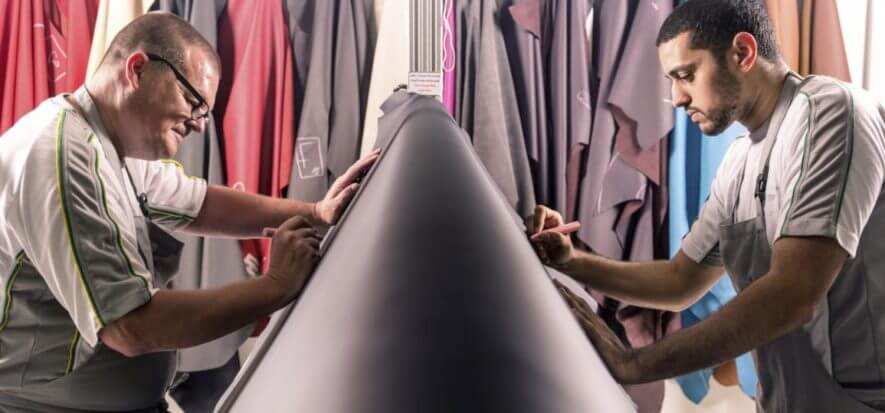Tanning group Bridge of Weir and automotive brand Bentley explain why premium autos prefer leather, and why even Polestar is opting for the latter above other materials. “We don’t plan on substituting leather with a synthetic material – state Bentley’s spokespeople -. The first reason is that our clients aren’t asking us to do so. The second reason is that the manufacturing process for synthetic “leather” often offers an ecological balance that is worse than that of leather.
Scottish tannery Bridge of Weir, specialized in manufacturing the material for the automotive segment, has developed a manufacturing process that respects extremely severe standards when it comes to animal welfare, as well as ensuring that the material used is traceable and sustainable. That’s how it convinced Polestar, vegan-born automaker, to re-introduce leather as a material.
Bentley’s choice
Bentley delivered 15,174 cars in 2022. French site L’Argus visited the labs where the cars’ interiors and seats are made. The leather used comes from Northern Europe. Each piece of leather purchased is selected and chosen by a Bentley technician. “Today we scan the leather – spokespeople from the brand explain -. The machine establishes a scheme to optimize the cut based on the non-usable parts and the profile that the finished product must have”.
The interior of the Flying Spur or Continental models require between 15 and 18 units of bovine leather, while the Bentayga requires 21. This contrast sowing needs between 20 and 40 hours per single vehicle. Bentley’s manufacturing director states that the brand doesn’t plan on substituting leather with a synthetic material. First of all because Bentley’s customers want leather. Second because Bentley aims to become carbon neutral in a few years and thus cannot use plastic.
Premium automotive
Bridge of Weir’s customer list includes Aston Martin, McLaren, Lotus, Land Rover and Volkswagen, to cite a few. The Scottish tannery states that thanks to its manufacturing system, the leather can be tanned in a sustainable and ethical manner. First because the hides tanned would otherwise end up in landfills. Second because the byproducts of the tanning process are used in the food and cosmetic industries. Third because whatever can’t be reused is sent to the thermal plant to produce energy for the tannery.
Arguments that had an impact on Polestar as well. The Swedish EV brand understood that declaring itself as a vegan brand was a mistake, and it now uses leather tanned by bridge of Weir for its interiors. So much in fact that Fredrika Klarén, head of sustainability at Polestar, explained to MotorTrend: “All the leather used respects extremely severe standards when it comes to animal welfare, as well as being completely traceable and free of any chrome. Moreover, the circular production process is patented and reduces carbon emissions”.
Read also:











